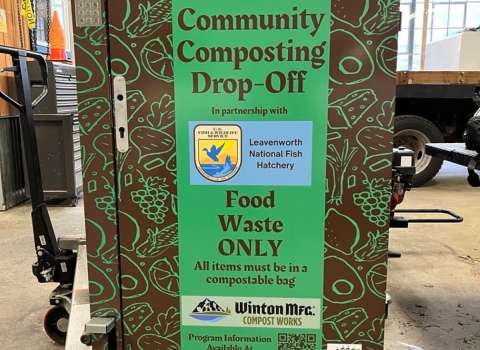What action is the Service taking?
The Service is finalizing the delisting of the Cumberland sandwort, a delicate white flowering plant native to Kentucky and Tennessee, from the Endangered Species Act (ESA) due to recovery. Based on a thorough review of the best available science, the Service found that the species is stable, no longer threatened with extinction, and therefore no longer needs ESA protections.
How did the Service determine that the plant had fully recovered?
The 1996 Recovery Plan for Cumberland sandwort stated that delisting would be considered when at least 40 geographically distinct occurrences of the plant were adequately protected and remained stable or increasing in numbers for five years. In addition, at least 12 of these occurrences must be in counties other than Pickett County, Tennessee.
Detailed in the proposed rule was 42 distinct, self-sustaining and adequately protected occurrences that have been known to exist for an average of 21 years. Of those 42 occurrences, 14 occur outside of Pickett County. Therefore, the delisting recovery criteria have been exceeded. The Service’s evaluation of the species’ status found that threats to the species have been eliminated or reduced (especially related to habitat loss or modification), adequate regulatory mechanisms are in place, and that populations are stable.
What is the range of Cumberland sandwort?
The Cumberland sandwort is restricted to sandstone rock shelters of the Cumberland Plateau in Fentress, Morgan, Pickett, and Scott counties in Tennessee. It is also found in McCreary County, Kentucky. The Cumberland sandwort is now found in 71 sites in Tennessee and Kentucky. Sixty-six of these sites are located on federal and state conservation lands with regulations or management plans to prevent habitat destruction or removal of plants. This compares to just 28 sites when the recovery plan was completed in 1996.
Current occurrences are located in separate river drainages, ensuring this species has redundancy or multiple populations representing its full geographic range, which will help protect it from threats (59 occur in the South Fork Cumberland River drainage, 12 occur in the Obey River drainage, and one introduced occurrence has been established in Daniel Boone National Forest). All but five occur on conservation lands with existing management and of the other five, two are protected by conservation easements.
What recovery actions supported this recovery success?
As with most recoveries under the ESA, Service conservation partners played an important role in this success. The Tennessee Department of Environment and Conservation (TDEC) started a structured monitoring program almost 20 years ago. To address recreation related impacts on public lands, TDEC also coordinated with the National Park Service and state agencies to install fencing, educational signage, stairways, and trail borders. At Pogue Creek Canyon State Natural Area in Tennessee, the state avoided sandwort sites when establishing new trails. In Kentucky, Kentucky Nature Preserves and the Cincinnati Zoo and Botanical Garden helped the U.S. Forest Service implement a reintroduction of the species into Daniel Boone National Forest. The Missouri Botanical Garden has placed Cumberland sandwort seeds, collected from many sites, in a conservation seed bank for long-term storage should they be needed for future conservation efforts.
Where can I find the background information on this decision?
Check out the proposed and final rules, supporting documents, the post-delisting monitoring plan, and the comments received on the proposed rule on regulations.gov under Docket number FWS–R4–ES–2019-0080.
After delisting, will the Cumberland sandwort continue to be monitored by the Service or others?
Yes. As part of the Federal Register notification of the proposed delisting, the Service announced the availability of a draft post-delisting monitoring (PDM) plan. The draft PDM summarizes the species’ status at the time of delisting, defines thresholds or triggers for potential monitoring outcomes and conclusions, and lays out frequency and duration of monitoring. It also articulates monitoring methods including sampling considerations, outlines compilation and reporting procedures and responsibilities, and proposes a post-delisting monitoring implementation schedule, including timing and responsible parties.
Post-delisting monitoring will be completed through the cooperative efforts of multiple agencies: Tennessee Department of Environment and Conservation (principally), Office of Kentucky Nature Preserves, National Park Service, and the Service. For a copy of the PDM plan search for Docket number FWS-R4-ES-2019-0080.



